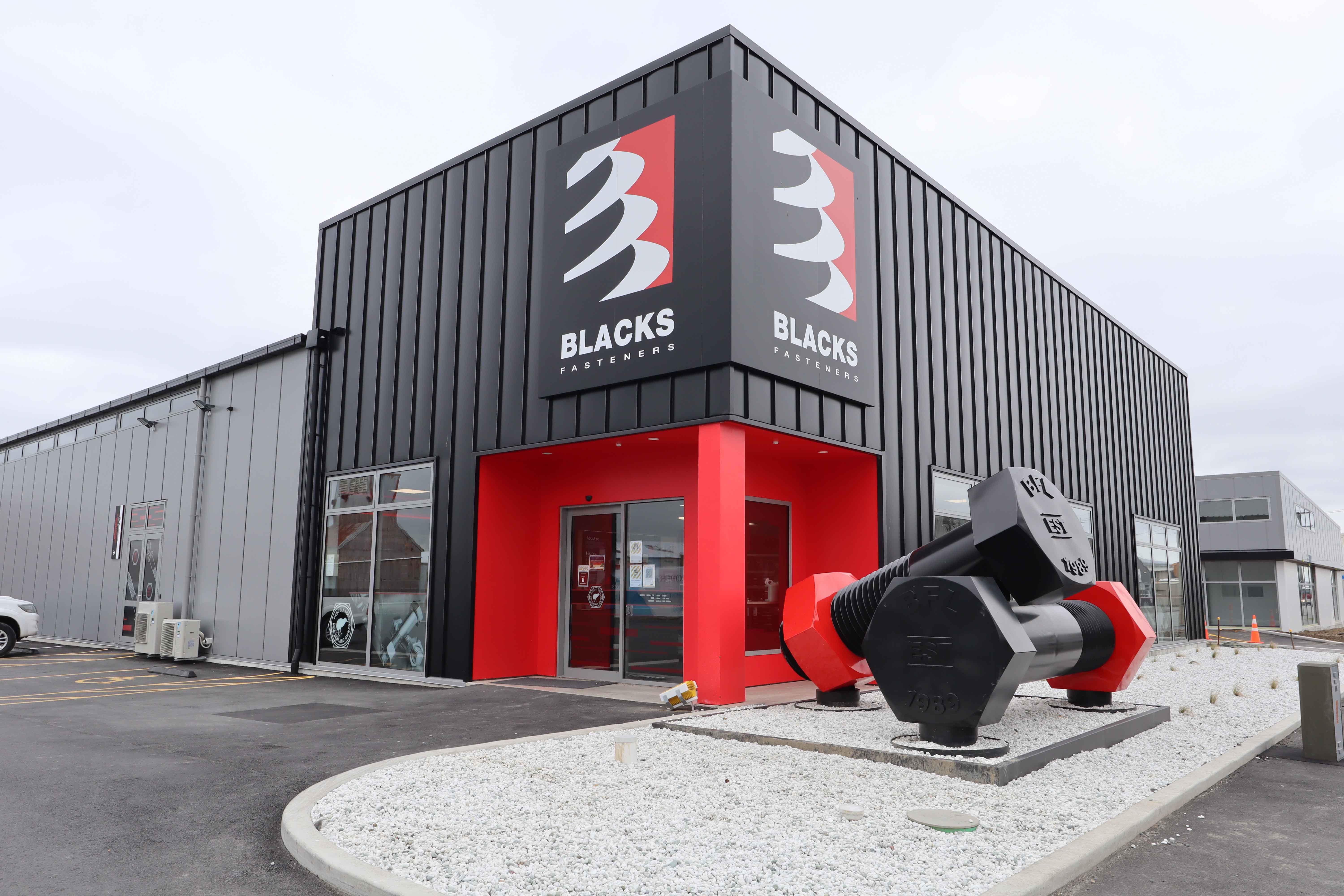How much does a roller door cost - A buyers guide to roller doors
How much does a roller door typically cost? This is a simple question we get asked a lot but several factors influence the cost, and function, of a door.
Doors are one of the few moving parts in a building, and also one of the most important. Nothing increases downtime like a roller door that won't open or a roller door that has blown in. Doors are a crucial element in any commercial or industrial building which is why we thought we’d explain to you the two most common door types, their costs, and a few important factors to consider when choosing between these door types.
Roller doors vs roller shutter doors
Roller doors
The first thing to note is the difference between a roller door and a roller shutter door.
A roller door is made of lightweight steel sheets that are crimped together to make up a sheet curtain the height of the door. This is usually around 0.55 gauge colour steel, which is pretty similar to the type of material used for the roofing and cladding of buildings.
They are also divided into two grades, sometimes referred to as ‘Series one’ and ‘Series two’ or domestic and commercial:
- Series one/Domestic doors have a maximum size of 3.2m² and are usually lifted up and down by hand rather than a chain. They are really only useful for small sheds, lockup units, or internal doors as they are lightweight with small tracks and prone to being blown in or broken into. These doors are quite affordable as they’re generally less than $2,500.
- Series two/Commercial doors are either chain or motor operated. They have the same curtain material for the door but with heavier tracks and sometimes wind locks. They technically have a size of up to 5m wide and 6m high but are best for doors up to 4.0m wide and 5.0m high. They are used a lot for farm sheds as they are easy to put up and down, cost-effective, and typically low maintenance. These doors typically cost between $3,000 and $6,000. Due to the lightweight curtain, we typically only recommend these doors are used in light industrial or farm applications where the risk of damage or break-ins is low.
Roller Shutter doors
Roller shutter doors are different to roller doors as they don't have a single pressed steel curtain that rolls up and down. They have a series of interlocking slats in a ‘C’ type shape. Usually, the slat is made out of 0.7 to 1.1mm galv and is then powder coated.
The thickness of the steel and the shape of each slat make them much stronger than a roller door curtain, which is why they are the best option for industrial buildings. The slats are also removable. This is an advantage when a door is hit or damaged as the affected slats can be removed and replaced without having to replace the entire door.
Motors
Most manufacturers offer a single-phase or three-phase option with roller shutter doors. A single-phase motor is good as it can be simply plugged into a three-pin plug and does not require hard wiring into three-phase power. Three-phase motors are typically longer lasting and can come slightly cheaper so are a good advantage if your building will have 3 phase power. It is worth noting that for the larger doors three-phase may be the only option due to the weight of the door.
What do roller shutter doors cost?
The cost depends on the size of the door(s) and is also impacted by the number of doors you are fitting. If a supplier is coming to fit six doors, for example, it will be more efficient per door than if they are coming to fit one door.
As a rough cost guide, one of the most common sizes of doors is 5.0m x 5.0m high or 6.0m x 5.0m high. This is because it is a comfortable width for manoeuvring vehicles in and out of. The 5.0m height is also comfortably above the legal road height of a vehicle (4.3m), which means there is a bit of extra height if an oversize load is taken in or a door is not quite open. These sorts of doors cost around $7,000 to $11,000 each, depending on how many you have and where you are located. If you are away from a main centre there could be extra freight and travel charges for the installers.
What about larger doors?
It is not uncommon to have a roller door that’s 7.0m to 8.0m wide. These types of doors are great in situations where forklifts are moving wide packs of products, such as timber or other raw materials. A door around this size often costs $12,000 to $20,000 (per door), which again could fluctuate depending on how many you require and your location.
Many manufacturers recommend installing a sliding wind bar for doors around this size. This is a bar that slides behind the door when it is down so that if the wind is high, the slats will press on the bar to prevent the door from blowing in. These bars can add another $2,000 to $3,000 but also provide you with peace of mind.
Roller shutters can go as wide as 9.5m with a sliding wind bar. You can also put a few doors together with a sliding mullion to get openings even larger.
Roller shutter door considerations
.png?width=800&name=XL%20%20Roller%20doors%20blog%20(1).png)
When reviewing different manufacturers it is worth checking a few details. Roller doors can be the cause of a lot of headaches and we find that extra investment upfront for quality is money well spent in the long term.
Items to consider:
- Slat thickness: The slat thickness should be at least 0.9mm or 1.0mm thick. Any less than this is not likely to last.
- Track shape and design: The tracks should be a heavy-duty material with brackets that bolt to the door studs.
- Wind lock guides: These effectively lock the end of the slats into the tracks and make it virtually impossible for the tracks to blow out. The track would either need to rip off the door stud or the slats would need to split apart.
- Noise: As the slats are all separate, roller shutter doors are prone to rattling in the wind. This can be particularly loud in a building with several doors all in a row. There are some ways to mitigate this, but not eliminate it. Options include:
- Tracks with a nylon or brush insert: This serves to reduce the noise of the slats against the steel track.
- Tracks that hold the slats snug: This gives less room for the stats to rattle in the track. However, it can lead to more noise when the door is raised or lowered, and enable the colour coating to be worn off.
- Quality of the motors: Ensure that your supplier uses a quality motor from a manufacturer like Grifco. There are cheap motors out there, but from our experience, they do not last long. A smart motor can also allow you to connect it to a security system so that the alarm won't set if the doors are not down.
- Remotes do not usually come as standard: Some types of motors allow remotes to be easily added, others don't.
If you are building a new premises, it’s also worth considering the material used for the roller door studs and the connection detail between the track and the door studs.
Cold-formed door studs
One type of door stud is made using two cold formed ‘C’ sections fixed ‘back to back’. These sections are usually the same material as the girts and are around 1-2mm thick.
This is a cost-effective door stud. The tracks are usually fitted by bolting or screwing through holes drilled in the door stud onsite.
Structural door studs
Structural door studs are usually made from a PFC or an RHS (rectangular hollow section). They are usually around 4-8mm thick and connected to the slab via cast in or chemset bolts.
They cost more than a cold-formed door stud but are much stronger due to the wall thickness. These are what we recommend for larger doors and areas that have high forklift and vehicle movements as they are less prone to damage.
The tracks usually connect to the door stud via plates or tabs that are welded to the side of the steel member. This makes for a strong connection, but the tabs must be welded in the correct place for the door that is going to be installed. As each manufacturer has slightly different connection centres, the door manufacturer should be selected early so the right tabs are welded on.
Ultimately, there’s a lot to consider when selecting the door(s) for your next commercial or industrial building, and we hope this article has provided some helpful insight into which option is most suitable for your unique requirements. If you have any questions or would like some further guidance on roller doors, please feel free to get in touch with one of our friendly experts today.



